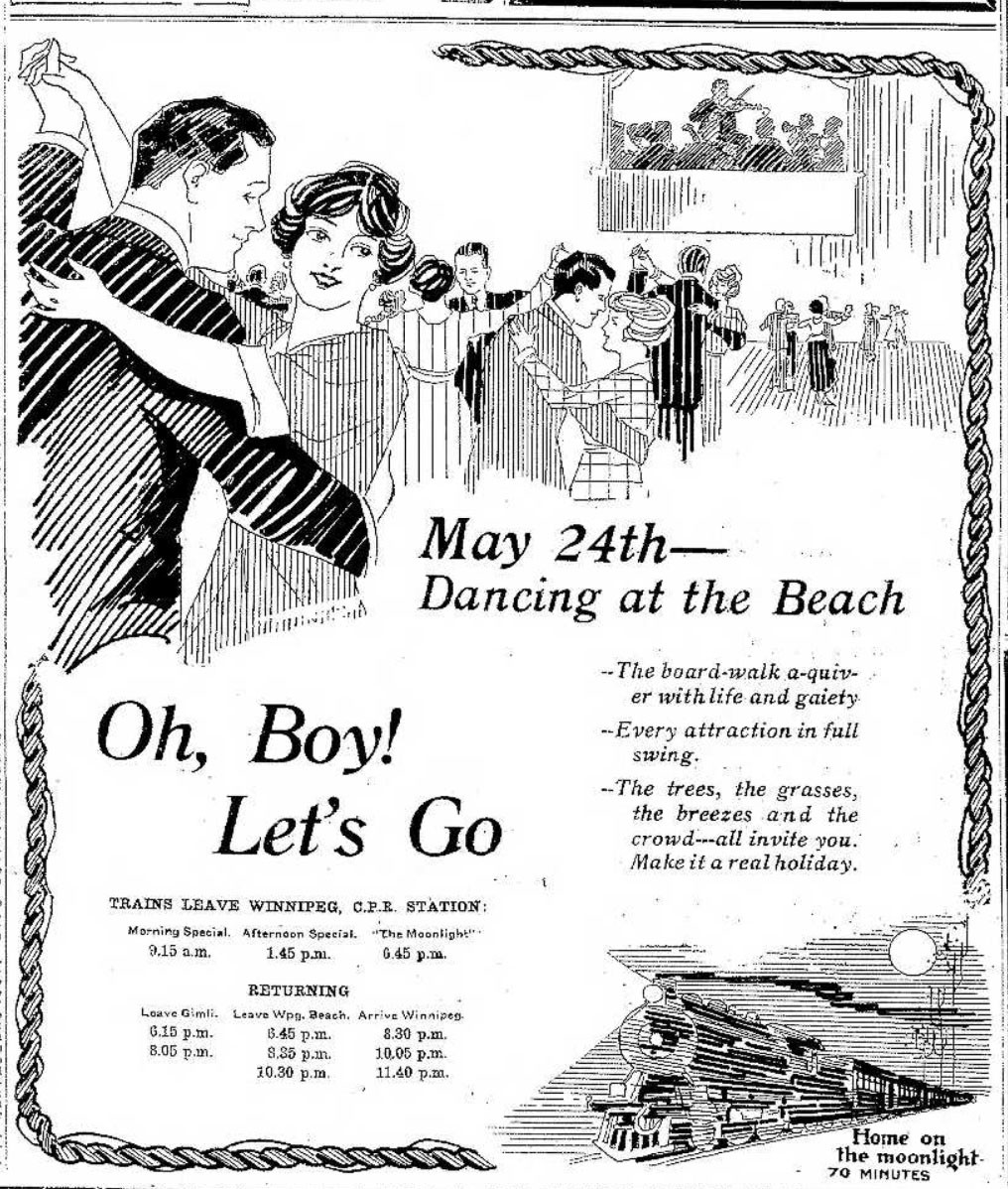All aboard the moonlight special
The secret history of beach travel in Manitoba
An advertisement for a boardwalk dance from the May 21, 1920 issue of the Manitoba Free Press. (Supplied photo)
Today, Manitoba’s beaches are generally only accessible by car. However, that wasn’t always the case.
From 1916 to 1956, hundreds and occasionally thousands of Manitobans hopped aboard an evening train that took them to Grand Beach and Winnipeg Beach. Known as the Moonlight Special, the trains opened beach and cottage life up to Winnipeggers before the rise of the automobile.
The Moonlight Special operated through two world wars. For many Winnipeggers at the time, it was a one-way ticket to the dance pavilion at Winnipeg Beach, which brought lovers together with rhythmic ballads. Just 50 cents allowed a round trip by rail, and a night of dancing could be purchased for an extra nickel.
Barbara Lange spent years compiling an oral history of the Moonlight Special for her book Memories of the Moonlight Special and the Grand Beach Train Era. Doing so was Lange’s way of preserving the bygone era.
“I was quite astonished to find out how many generations of people owe their existence to the fact that their parents, grandparents or great-grandparents met on the trains, on the Moonlight,” Lange says.
“When I’m talking to these seniors and mention the Moonlight Special train, their eyes would just start twinkling, as if they’re thinking back to those times.”
Though many couples who met on the trains have since passed, romantic folklore is preserved by stories passed down through generations.
“There’s almost a mythology built up around the experience,” Dale Barbour, a historian and author of Winnipeg Beach: Leisure and Courtship in a Resort Town, 1900-1967, says. “It was a chance for couples to get together after the dance. There was always a sort of talk that the lights switched off so people could be in the dark together.”
Indeed, as a Winnipeg Free Press article from July 1950 titled “YOUNG HOOLIGANS ON BEACH TRAINS GET WARNING” reported, a judge once fined a youth rider $25 for “turning out lights on a moonlight train.”
The Moonlight Special’s allure began declining against the rise of the automobile. What used to be a treacherous journey to Winnipeg and Grand Beach became smooth riding with the construction of Highway 59, Lange says.
However, one strange event also contributed to its demise: on Labour Day of 1950, the dance pavilion, which was a staple of the Moonlight experience, mysteriously burnt down. By 1963, the railways were dug up for good.
What remains of the Moonlight Express are the memoirs of a bygone era, passed on through generations – many of which can be traced back to the late-night trains.
“The railroads made them exciting,” Barbour says. “You’d have the trains showing up, you’d have hundreds of people flowing off these trains ... the trains could create the moment.”
Barbara Lange’s book Memories of the Moonlight Special and the Grand Beach Train Era can be purchased at McNally Robinson Booksellers.
Published in Volume 76, Number 20 of The Uniter (March 10, 2022)






